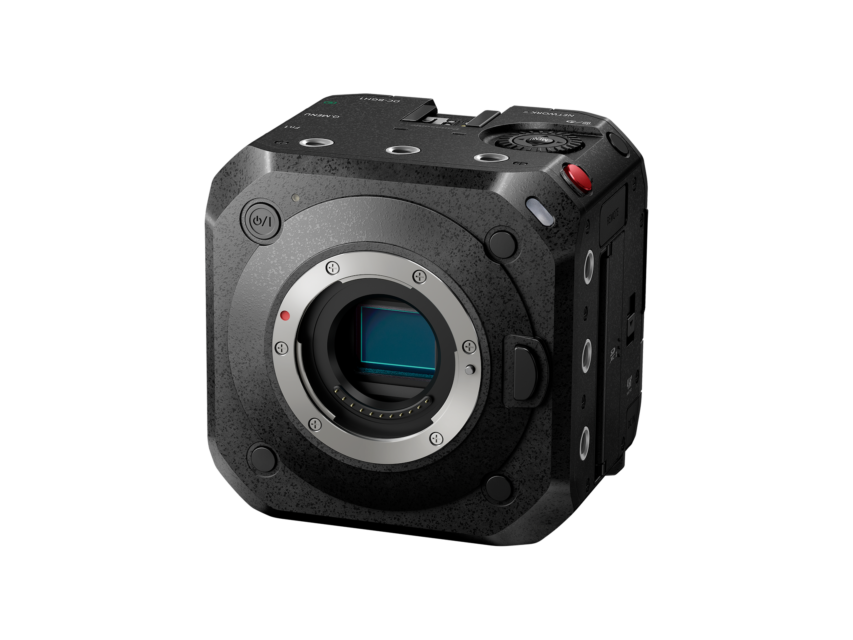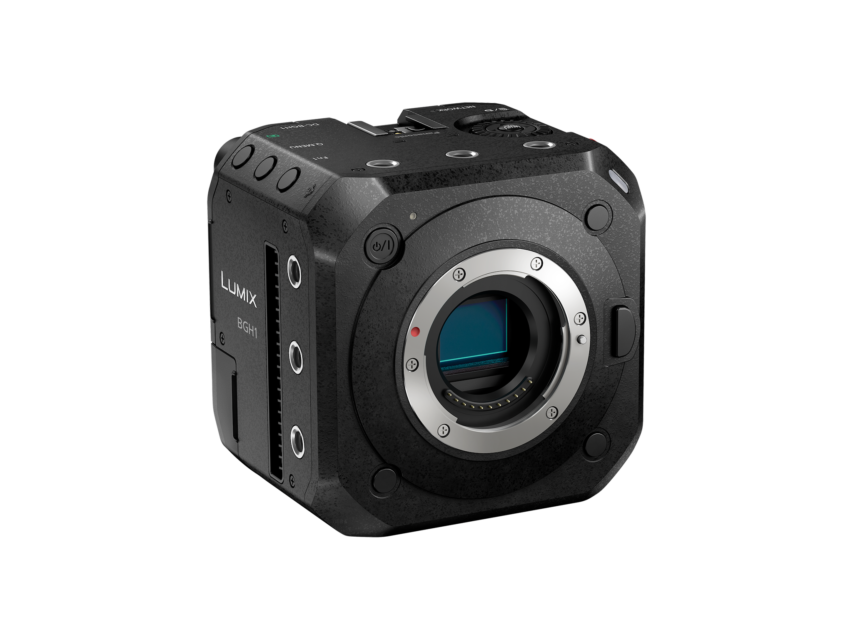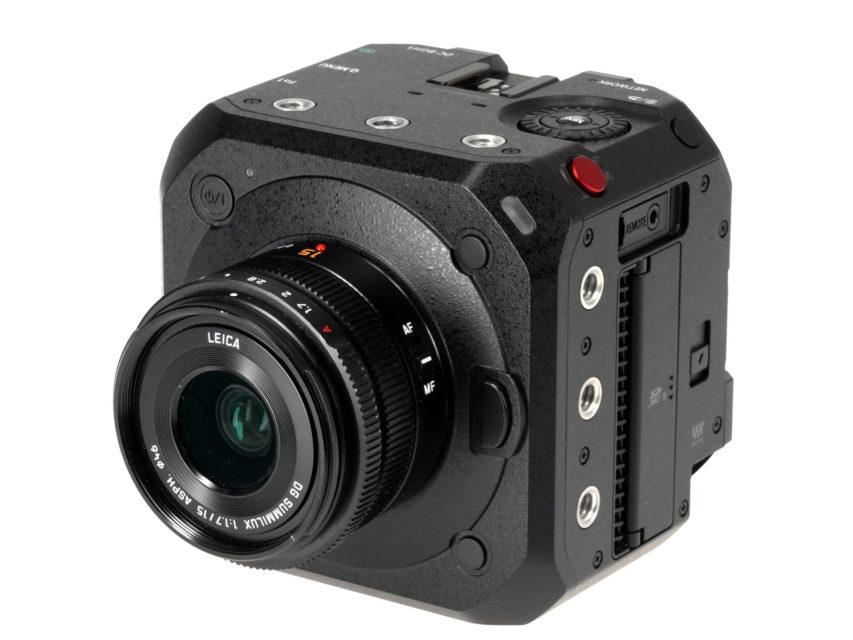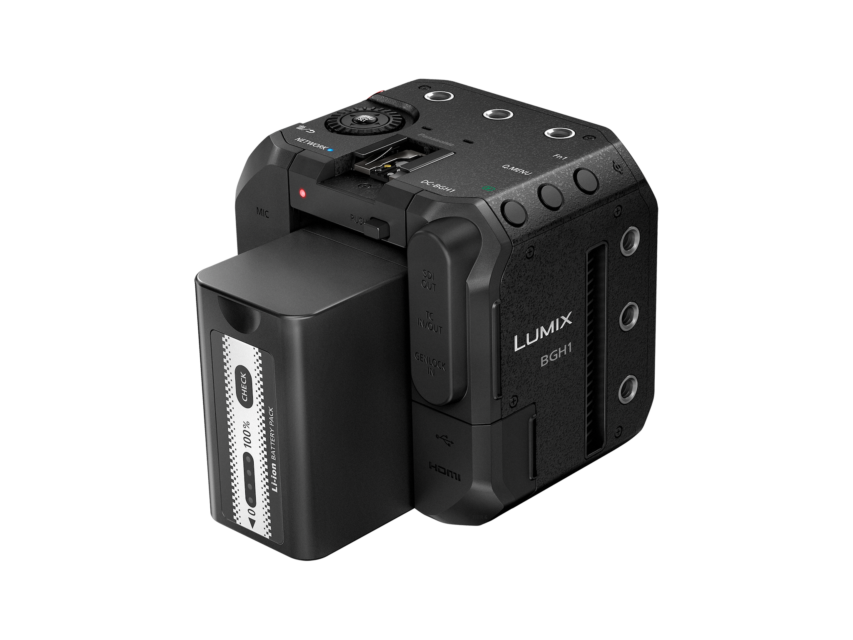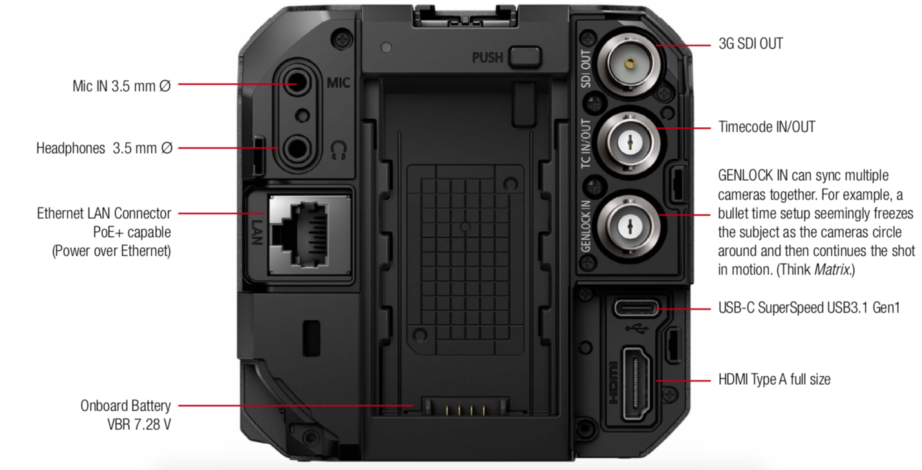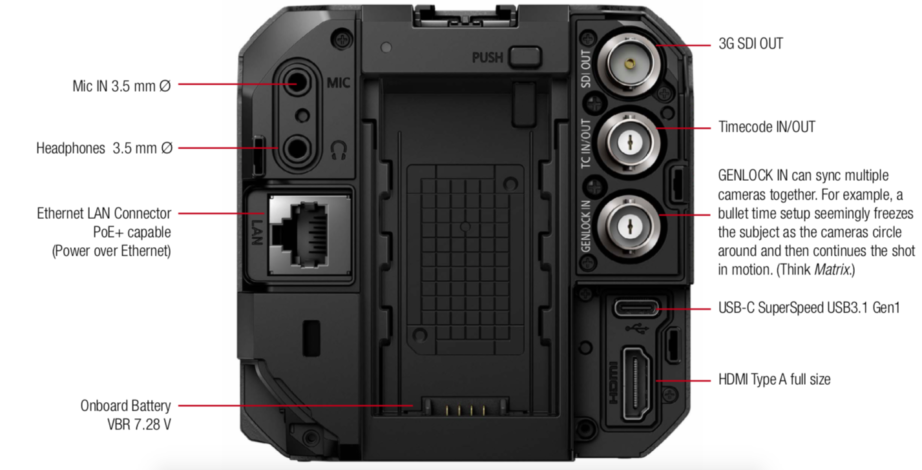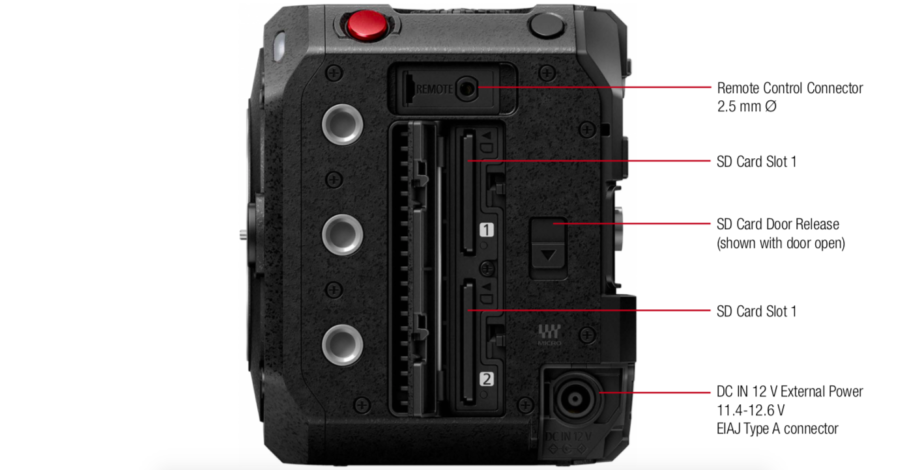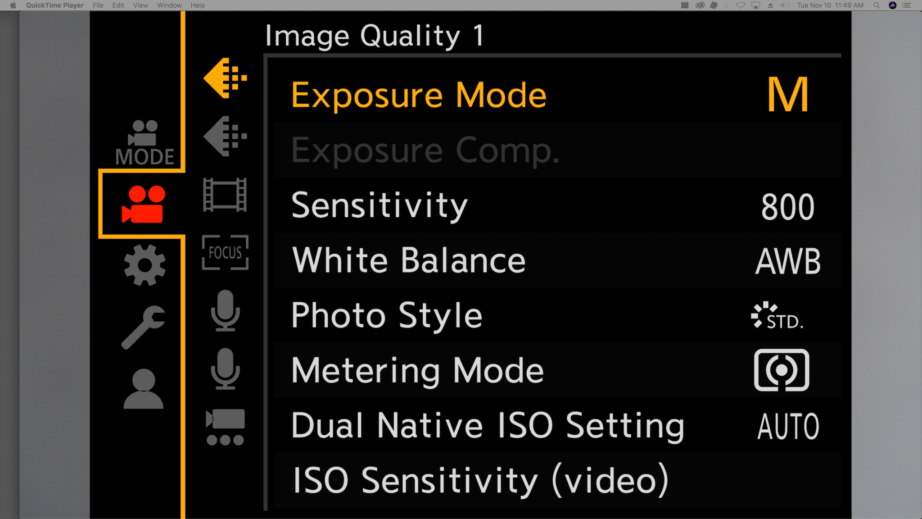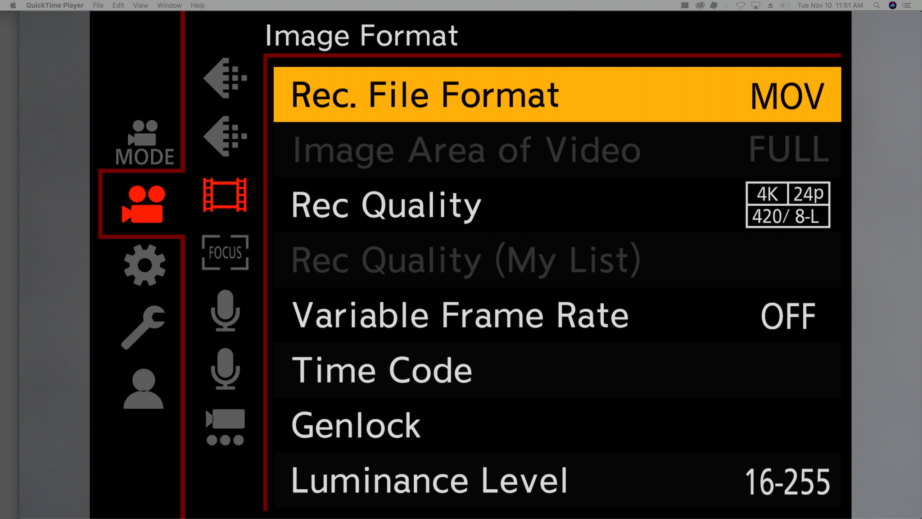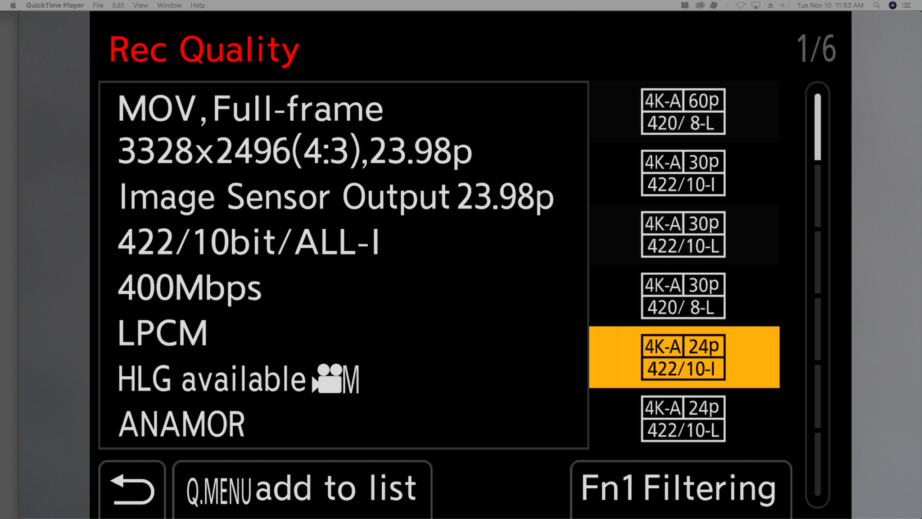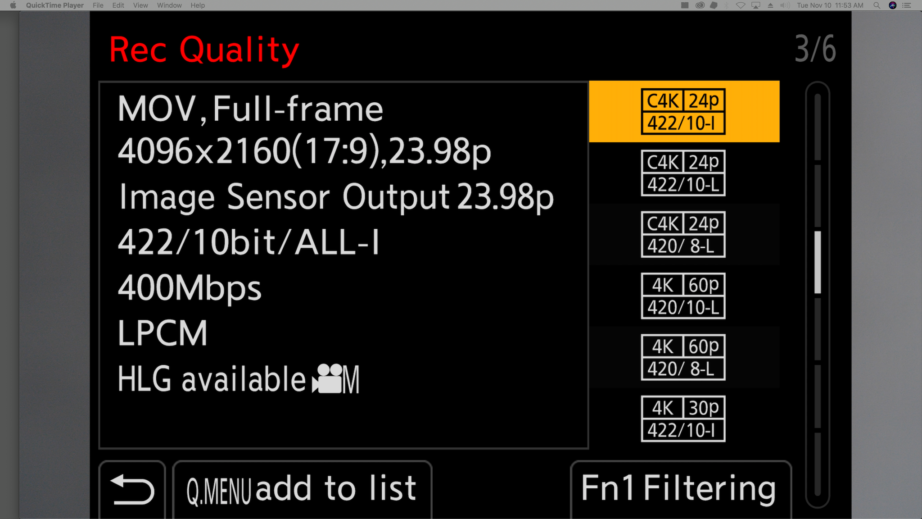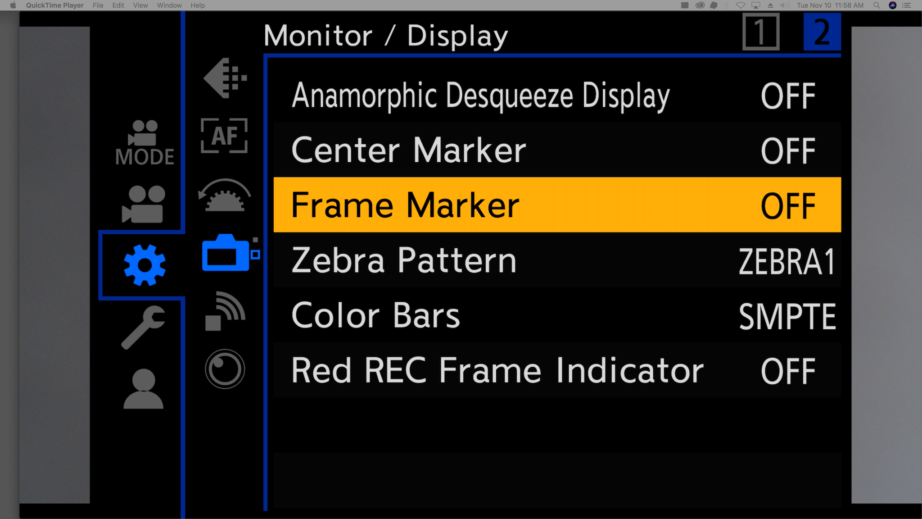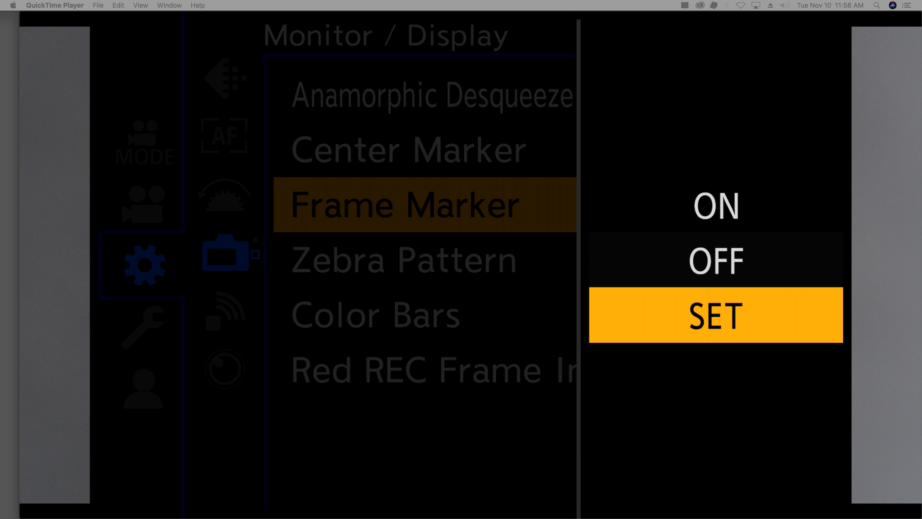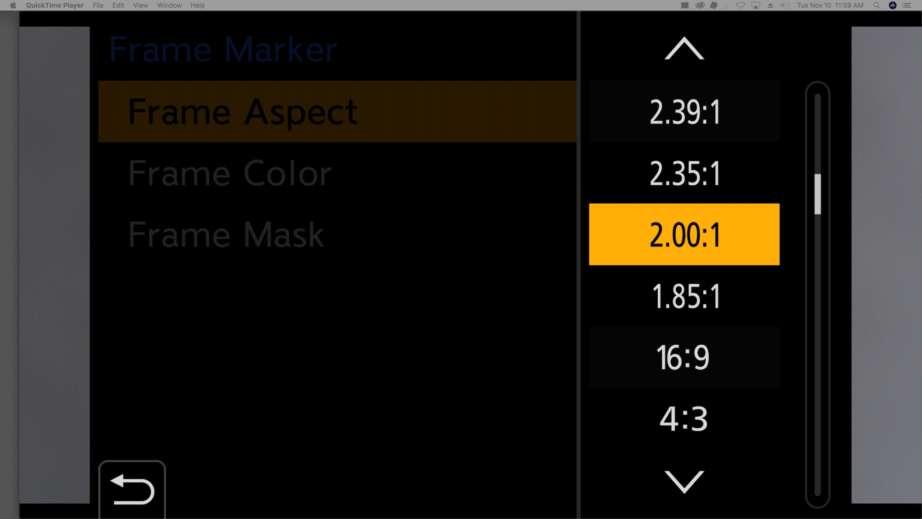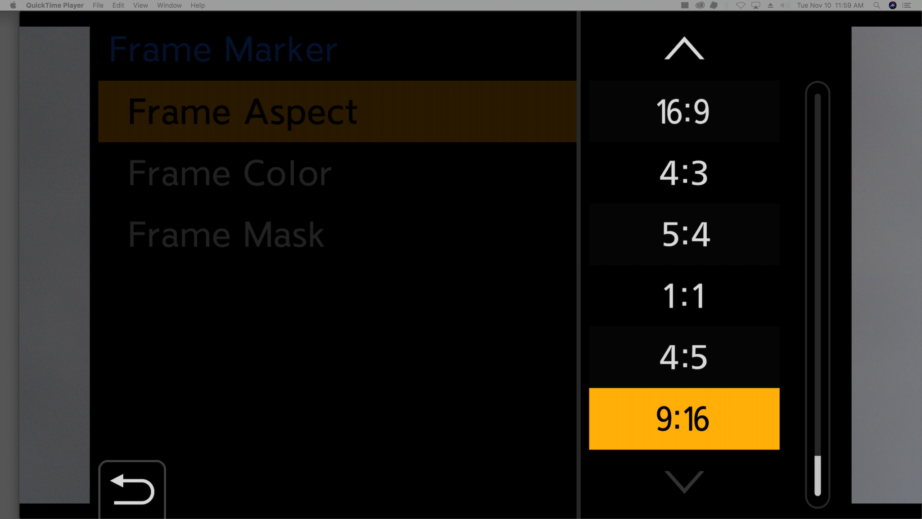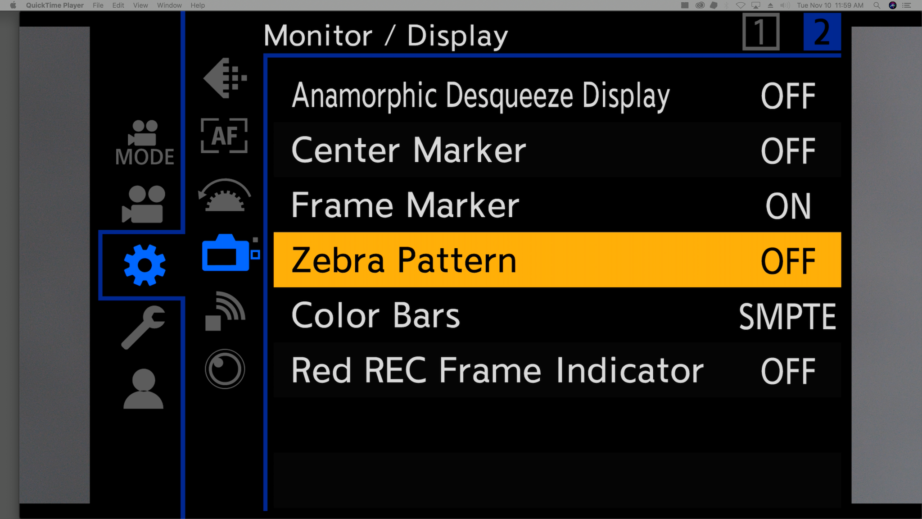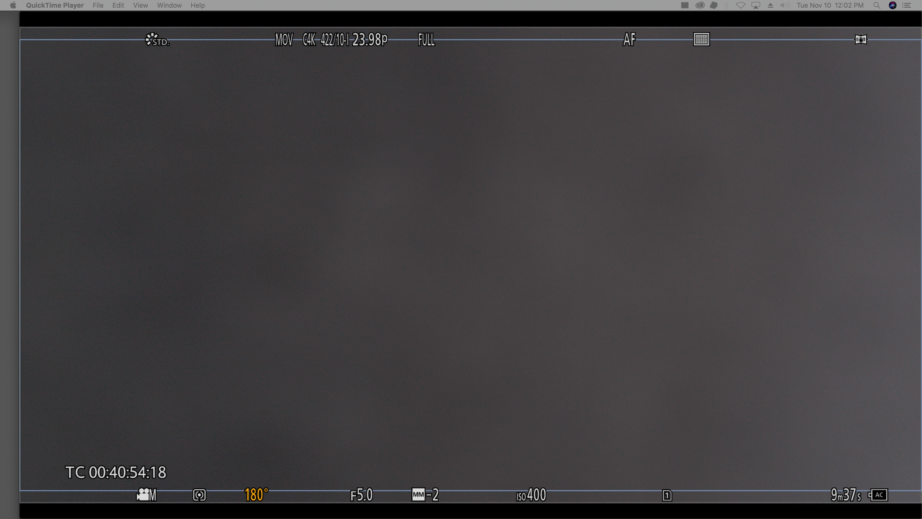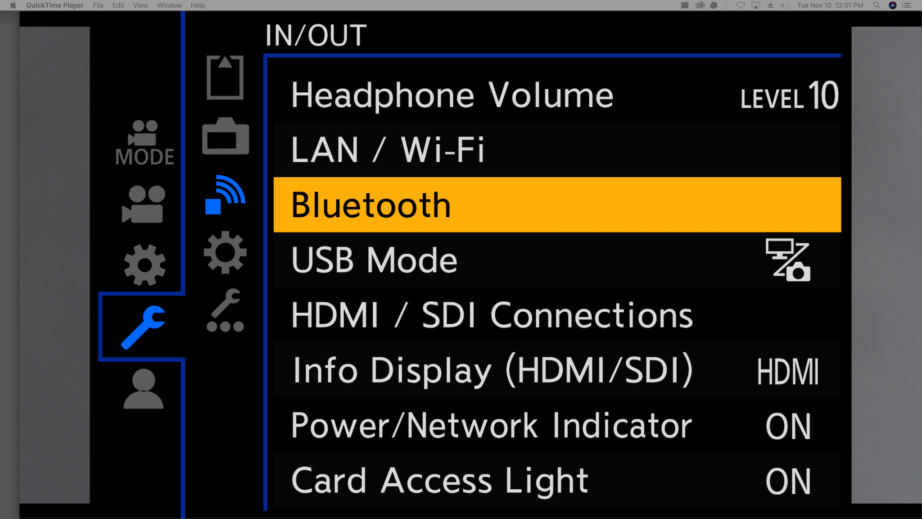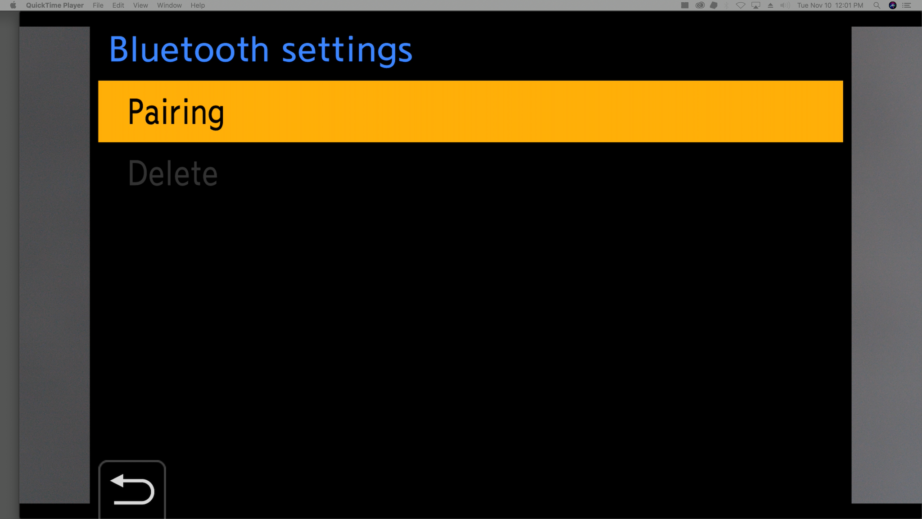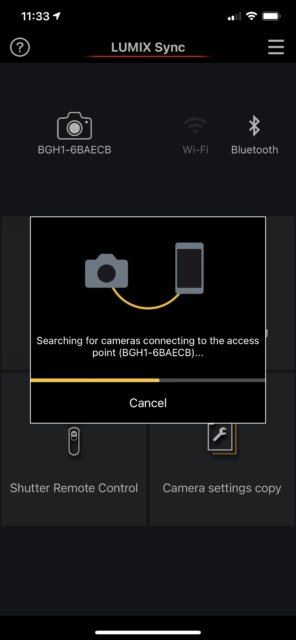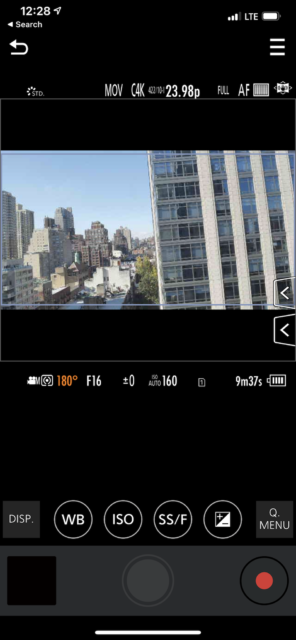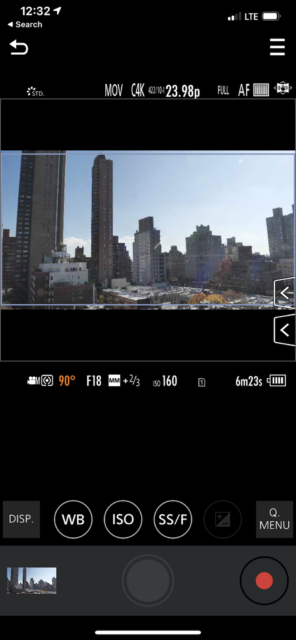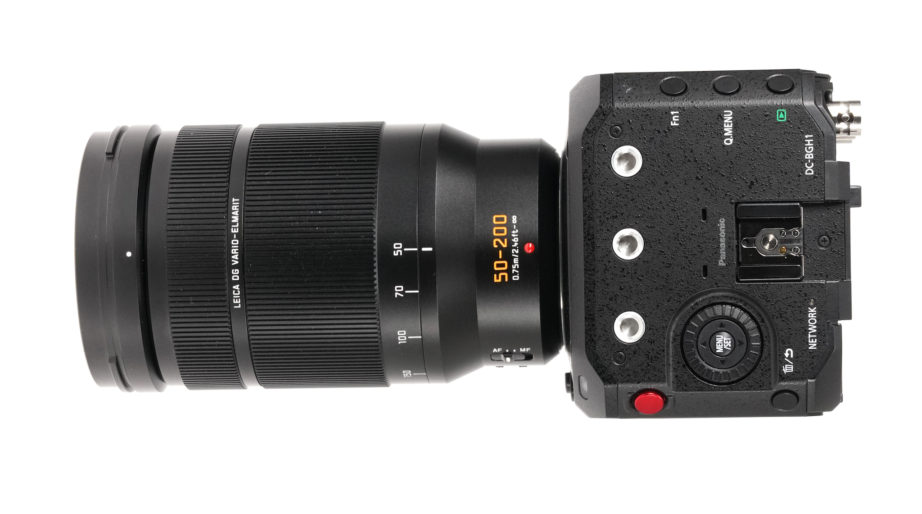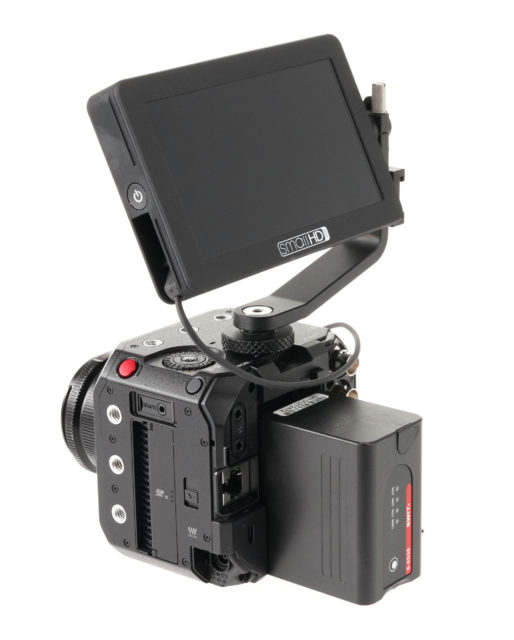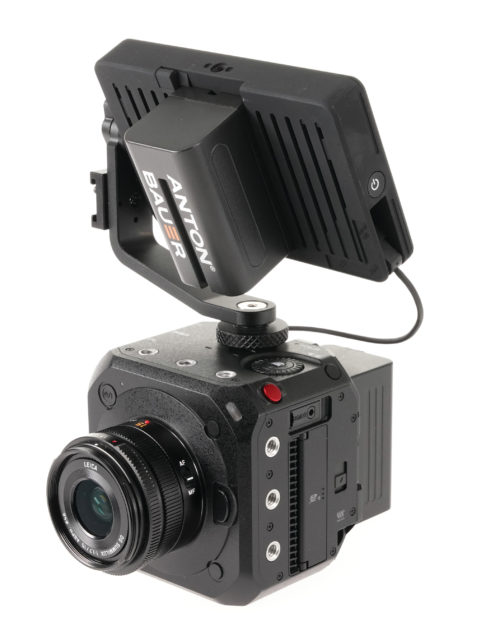Panasonic calls it a box camera.
Perhaps that is too modest a name for the LUMIX DC-BGH1.
“Box” reminds me of the first Kodak box camera of 1888. It had a simple fixed lens and lacked controls. “You take the pictures, we do the rest.” A century of box cameras followed: Brownie, Instamatic, Crown, Cadet, Ansco, Warwick.
Calling the BGH1 a box camera could be like comparing a Jiro (dreams of Sushi) Omakase experience to a box lunch.
“Cube” calls up the BGH1’s great potential.
Yes, the LUMIX BGH1 is boxy on the outside, with sculpturally beveled and rounded edges. It will feel familiar for broadcasting, streaming, multi-cam and IP remote control.
But the BGH1 is much more. Imagine a hypothetical product development meeting that could have launched the concept. Designers, engineers and planners are assembled in a meeting room, pre-pandemic, at Panasonic headquarters in Osaka. Twenty cinematographers join by video conference. They are simultaneously singing the praises of Panasonic’s popular LUMIX GH5s 10.2 Megapixel, video-friendly, Micro Four-Thirds camera. They ask, “What if you take that sensor and electronic support system and repackage it into a rugged, mountable, adaptable body with high-end connections?”
What really happened is explained by Mathew Frazer, LUMIX Business Development Manager at Panasonic USA. I took notes so the following is paraphrased from his description of the BGH1’s background:
“For image quality, the BGH1 is a slight step below the S series, but in terms of features, it’s well above. In fact, it does things not even found on an EVA-1.
“During product development that began more than a year ago,
we took a look at market conditions. We had already noticed that streaming applications were growing substantially. This was even before COVID-19. Since then, obviously the demand for high quality streaming options has grown exponentially. We expect this camera will get a lot of use in streaming. Also, we looked at broadcast and realized that a cinema quality camera at this price was missing. There are going to be a lot of other uses for this camera. We considered the strengths of the GH5s, S1H and S5 cameras: compact size, light weight and good for handheld work. They don’t draw much attention when you’re doing documentary work.
“So, we took those strong points and applied them to a box camera form factor. And then we saw additional applications. For example, you could use up to 12 BGH1 cameras in a multi-camera array. Mount it in vehicles. Attach it to a drone or gimbal. Use it for VR, live events, reality shows, docs and certainly streaming.
“One complaint that we got from the cinema community with cameras like the GH5s and the S1H was the latency over HDMI. So we added a 3G SDI port for instantaneous viewing on monitors. We improved the autofocus system with AI that detects faces and even fast-moving animals. We made it as lightweight as possible, and it is about 35 grams lighter than a GH5s. In the market research phase, users requested lots of 1/4-20 threads because they wanted mounting flexibility. We think the BGH1 provides all these things and achieves a price point that people haven’t expected before. We see lots of opportunities.”
The press release arrived on October 13, 2020: “Panasonic is proud to announce the release of the brand’s first box-style LUMIX Digital Single Lens Mirrorless Camera DC-BGH1. Based on the Micro Four Thirds (MFT) System standard, the new LUMIX BGH1 takes advantage of high mobility, an extensive interchangeable lens lineup, and includes technologies Panasonic has acquired though the development of professional cinema cameras, camcorders and the LUMIX GH series. It can be used in a variety of ways from shooting on drones to IP remote control to live streaming and more.”
Yes, lots more. What do BGH1, FX6 and Komodo have in common? Their bodies are roughly 4-inch cubes. (BGH1 is 93.0 x 93.0 x 78.0 mm / 3.66 x 3.66 x 3.07″.) They are lightweight. (BGH1 is 545g / 1.2 lb.) They have lots of places to mount accessories and secure the camera. Komodo is Super35, FX6 is Full Frame and BGH1 is MFT.
Is there a good reason for Micro Four Thirds? Yes, the lenses are tiny and plentiful. There is a vast inventory of Micro Four Thirds lenses from more than 15 manufacturers. The standard was established in 2008 for interchangeable mirrorless digital cameras. Flange focal depth is 19.25 mm. Image diagonal is 21.6 mm on the sensor’s image area of 17.3 x 13 mm.
So, the BGH1 is an interchangeable lens camera that shoots C4K to 60 fps for adrenaline adventures with gimbals, drones, helmets, helicopters, jets, hang gliders, ultralites, bikes, boards, skis and even on a tripod.
The BGH1 has a 10.28 Megapixel Sensor with a Venus Engine (image processor) and Dual Native ISO made famous by Panasonic VariCams where we all learned about shot noise and separate circuits for regular and high ISO ranges. Maximum ISO is 51,200.
Internal All-I recording to SD cards reaches 4:2:0 10-bit C4K/ UHD 4K up to 60 fps or 4:2:2 10-bit to 30 fps. External 4K 4:2:2 10-bit C4K/UHD 4K 60p output is available simultaneously via the camera’s HDMI and SDI connectors. V-Log L is included. Under and overcranking ranges from 2 fps to 240 fps in FHD.
The rugged BGH1 body is made of aluminum and magnesium. Its advanced thermal management with heat dispersion and cooling fan provides unlimited recording times.
Panasonic LUMIX BGH1 Details
- 10.28 MP Sensor. 17.3 x 13 mm Image Area.
- Dual Native ISO: 160 & 800 Normal; 400 & 2000 in V-Log L.
- MicroFourThirdsLensMount.19.25mmFlangeFocalDepth.
- Numerous Recording Permutations, including:
- 4096 x 2160 C4K and 3680 x 2760 Stills
- MOV: H.264/MPEG-4 AVC, H.265/HEVC
- MP4: H.264/MPEG-4 AVC, H.265/HEVC
- C4K: 24, 30 fps @ 400Mbps (4:2:2 10-bit ALL-Intra)
- Power over Ethernet+ (PoE+ for power, signal and control).
- Control up to 12 LUMIX BGH1 cameras via Panasonic LUMIX Tether for Multicam application.
- Future firmware update will support IP streaming over wired ethernet (RTP/RTSP).
- Ethernet port, USB 3.1 Type-C, 3G-SDI and HDMI Type-A connectors provide simultaneous output.
- Genlock IN and Timecode IN/OUT.
- Dual UHS-II SD Card slots
- Anamorphic desqueeze viewing via SDI/USB-C/Ethernet
- Anamorphic desqueeze ratios: 2x / 1.8x / 1.5x / 1.33x / 1.30x.
- 3.5mm Audio In/Out. Optional XLR adapter DMW-XLR1.
- Remote control via 2.5 mm connector.
- 2.4GHz Wi-Fi and Bluetooth 4.2.
- Remote camera control and tethered still shooting with LUMIX Tether for Multicam and LUMIX Sync.
- SDK for camera control via USB.
- Dimensions: 93.0 x 93.0 x 78.0 mm / 3.66 x 3.66 x 3.07″
- Weight: Approx. 545 g / 1.2 lb (Body only)
- External Power: 12V, 3A AC Adaptor included; PoE.
- Batteries: Optional onboard VBR 7.28V Li-ion 43, 65 or 86 Wh. • The Panasonic LUMIX BGH1 costs around US$ 1,999.
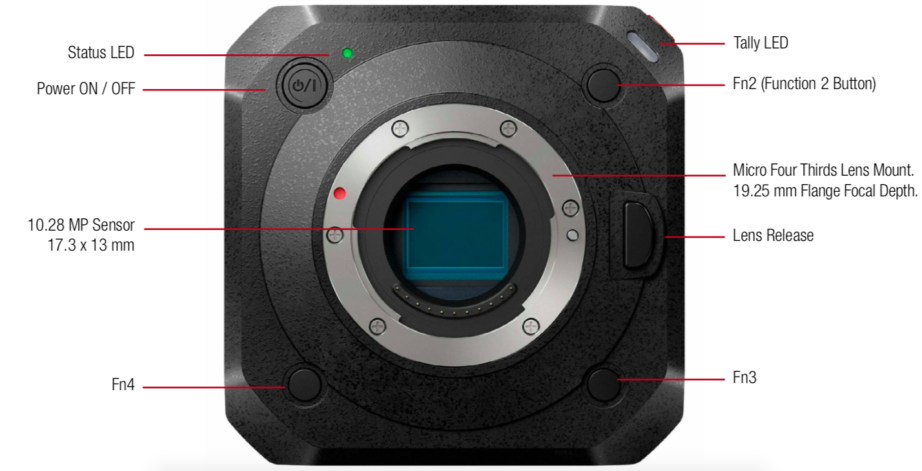
Actual Size. W: 93.0 mm, H: 93.0 mm, D: 78.0 mm / 3.66 x 3.66 x 3.07”. Weight body only 545 g. / 19.2 oz.
BGH1 Menus
- Menus are familiar to Panasonic LUMIX users.
- .MOV Recording Format (or MP4)
- 4K-A is good for 1.33:1 (4:3) Anamorphic 3328×2496.
- Here’s C4K, 24p (23.98) 17:9, 4096×2160 24p 422 10-bit, All-I
- Frame line menu starts here.
- SET to choose aspect ratios
- Let’s select 2.00:1
- Lots of possibilities, including social media vertical formats
- Turn off Zebra Pattern here.
- Our display screen now looks like this.
- For LUMIX Sync remote operation from iPhone, start here
- Download LUMIX Sync from iPhone App Store
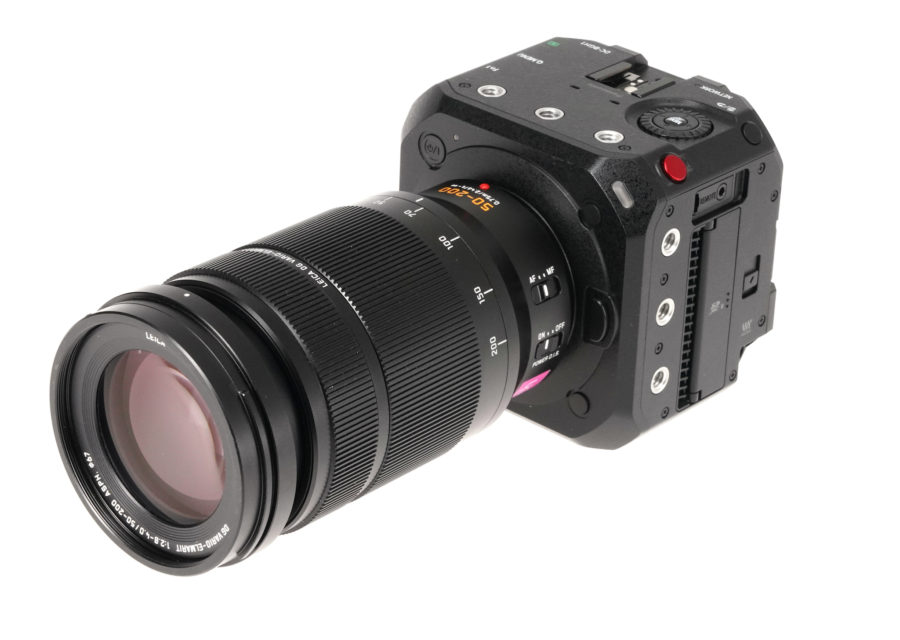
Above and Below: BGH1 with Leica DG LUMIX MFT Vario Elmarit 50-200mm F/2.8-4 ASPH.
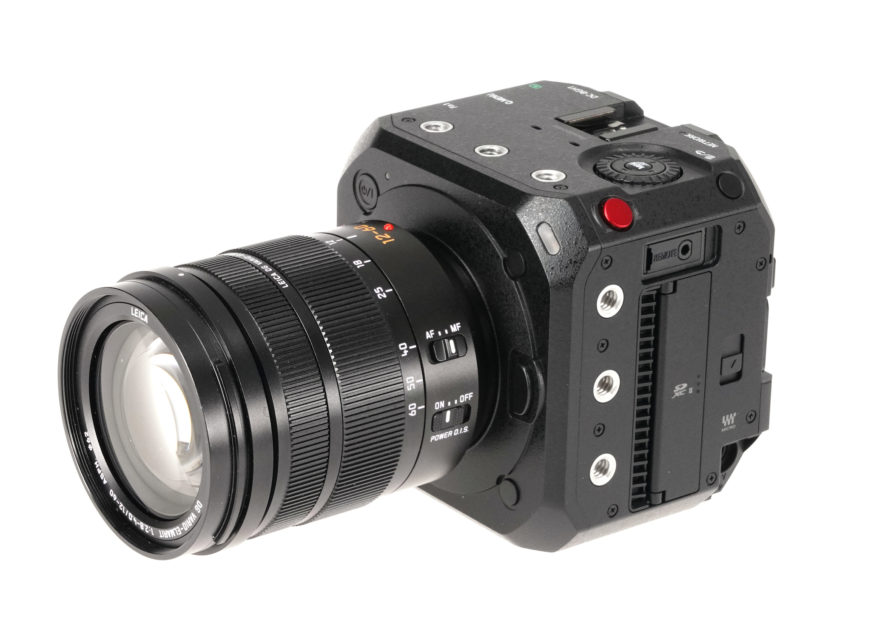
BGH1 with Leica DG LUMIX MFT Vario Elmarit 12-60mm F/2.8-4 ASPH.
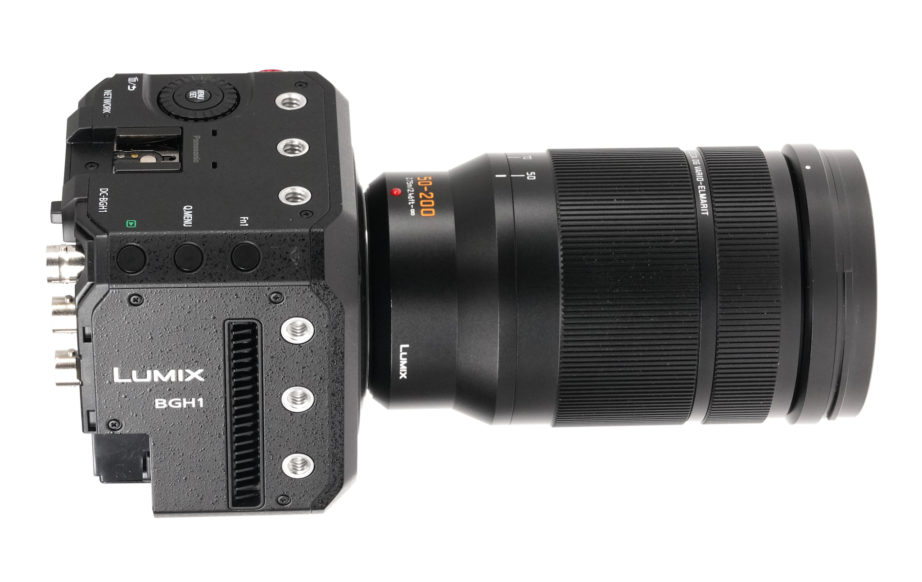
BGH1 with Leica DG LUMIX MFT Vario Elmarit 50-200mm F/2.8-4 ASPH.
- BGH1 with Leica DG Summilux MFT 15mm F/1.7 ASPH, onboard SWIT S-8D58 battery and SmallHD Focus 5-inch HDMI Monitor with Anton/Bauer L-Series battery.
(This is a “reprint” from January 2021 FDTimes issue 106.)

